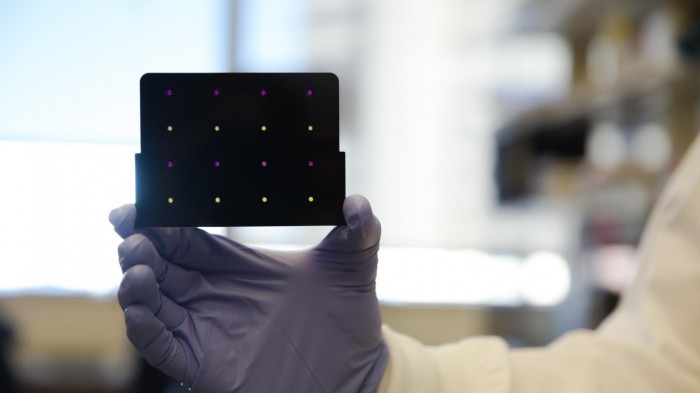Cheap, Paper-Based Zika Diagnostic Tests Are Here
A new paper-based rapid test for Zika virus could be a valuable tool for health workers in areas that don’t have access to more complicated diagnostic technology. It’s also sensitive enough to distinguish between Zika and common related viruses like dengue, a challenge that hampers some conventional diagnostic tools. And its inventors say it could be ready for use in the field in a matter of months.
Zika virus, a mosquito-borne disease known to cause birth defects if it infects pregnant women, has been spreading rapidly throughout the Americas for several months. The diagnostic technology required to achieve the specificity needed to distinguish between Zika and related viruses that are also common in affected regions is relatively expensive and requires specialized skills. In a scientific paper published today, the inventors of the simple, paper-based test showed that it can detect Zika virus in plasma from infected monkeys.

They also showed that it not only distinguishes between Zika and dengue but also between different Zika strains. This could provide valuable information to health workers because genetic variation may lead to different symptoms. For example, the authors point out that a strain found in Brazil seems to be more closely linked than others to higher incidences of fetal microcephaly and Guillain-Barré syndrome, a rare immunological disorder that may be triggered by Zika virus.
At the heart of the new diagnostic test is a piece of paper that on its surface contains biological machinery—components found in living cells—that can carry out gene expression. A specialized gene is paired with a sensor made of RNA, which triggers the production of a purple-colored protein when exposed to target sequences from the viral genome found in the blood of an infected patient.
The research group behind the technology, led by James Collins, a professor of biological engineering at MIT, first demonstrated this kind of paper-based, “cell-free” system in 2014 as part of an Ebola diagnostic test (see “Synthetic Biologists Create Paper-Based Diagnostic for Ebola”). When the Zika outbreak began, the group saw an opportunity to apply the technology to another urgent health crisis.
In this case, the researchers added new components to the system for collecting and preparing the sample, and for distinguishing between individual Zika strains using the gene-editing tool CRISPR. The system is freeze-dried on the paper and then rehydrated when needed.
Each test, which can process a sample in about three hours, can be stored at room temperature for up to year and costs less than a dollar to make, according to the researchers. They are now entering discussions to commercialize the technology and possibly test it in the field, says Collins.
Keep Reading
Most Popular
Large language models can do jaw-dropping things. But nobody knows exactly why.
And that's a problem. Figuring it out is one of the biggest scientific puzzles of our time and a crucial step towards controlling more powerful future models.
The problem with plug-in hybrids? Their drivers.
Plug-in hybrids are often sold as a transition to EVs, but new data from Europe shows we’re still underestimating the emissions they produce.
Google DeepMind’s new generative model makes Super Mario–like games from scratch
Genie learns how to control games by watching hours and hours of video. It could help train next-gen robots too.
How scientists traced a mysterious covid case back to six toilets
When wastewater surveillance turns into a hunt for a single infected individual, the ethics get tricky.
Stay connected
Get the latest updates from
MIT Technology Review
Discover special offers, top stories, upcoming events, and more.